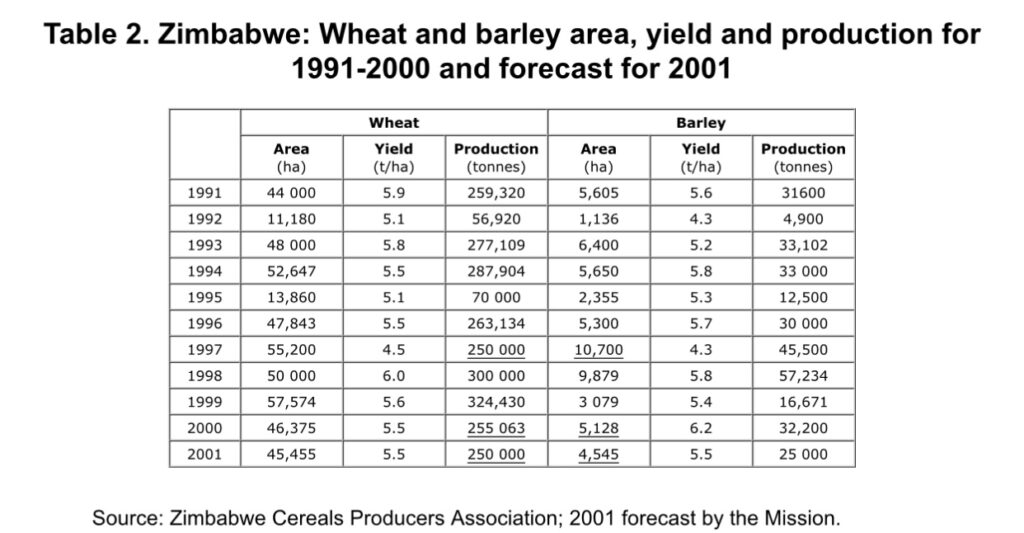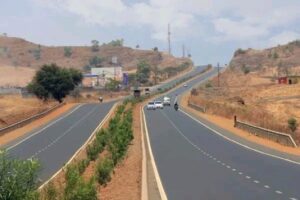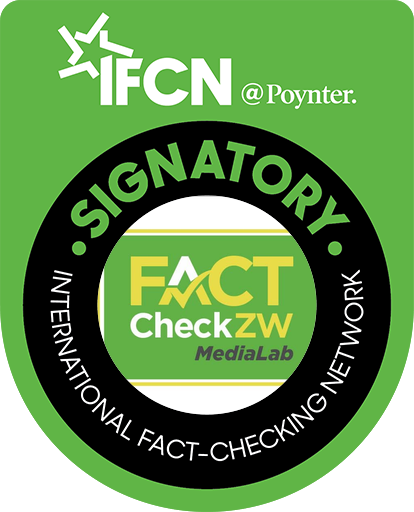CLAIM: Agriculture, another vital sector, has also witnessed noticeable growth, surpassing pre-land reform productions in wheat and tobacco farming.
SOURCE: The Chronicle
VERDICT: True
President Emmerson Mnangagwa addressed the just ended ZANU PF conference Friday, 25th October. Following his speech, the Chronicle in a story headlined ‘Together, we are building a modern Zimbabwe’ and an editorial ‘Zimbabwe’s march to prosperity a testament to visionary leadership’ made a claim that ‘agriculture, another vital sector, has also witnessed noticeable growth, surpassing pre-land reform productions in wheat and tobacco farming’.
Pre-land Reform
Land reform in Zimbabwe officially began in 1980 with the signing of the Lancaster House Agreement, as a programme to redistribute farmland from white Zimbabweans to black Zimbabweans as an effort by the new government to give more control over the country’s extensive farmlands to the black African majority.
Land reform incorporates “programmes that redistribute land ownership from large private landowners to small peasant farmers”.
The period between 1980 and 1996 is largely referred to as pre-land reform or land resettlement while the period from 2000 is known as the Fast Track Land Reform Programme.
The Fast Track Land Reform Programme (FTLRP) was the last of 3 phases of land reform in Zimbabwe dating back from 1980. From a dualistic system of 1 million communal small-scale peasant farmers and 6 000 large scale commercial farmers, the FTLRP in Zimbabwe transferred 10 million hectares to 1.3 million smallholder family farms.
Tobacco production
According to the Food and Agriculture Organisation, tobacco production was approximately 200 million kilogrammes per annum during the pre-land reform period.
In the pre-land reform period, tobacco farming grew from 64,310 ha in 1980 to 91,905 ha in 1998.
Immediately after the FTLRP of 2000, the area under tobacco production gradually reduced to 44,025 ha in 2004.
However, post 2010 tobacco production steadily increased hitting an all time record of 296 million kilogrammes in 2023.
According to the Tobacco Industry and Marketing Board, the 2024 yield went down to 208 million kilogrammes against a target of 265 million kilograms, which is lower than last year’s target. This year’s crop was affected by the El Nino induced drought.
The Tobacco Industry and Marketing Board noted that 11.7 million kilogrammes were delivered to auction floors and 197 million kilogrammes delivered to contract floors.
Wheat
Total annual wheat output was on a declining trend from 325,000 tonnes in 1990 to 18,500 tonnes in 2008, following the FTLRP. Primary production in the sector was down sliding owing to a number of challenges; key constraints to production included a limited and unreliable supply of low-cost inputs (e.g. seed, fertilizer), and limited capacity to mobilize capital.
In the 1990/91 season, Zimbabwe was 100 percent wheat self sufficient. In 2000, when the land reform programme accelerated, Zimbabwe was over 60 percent self sufficient in wheat. At this time, wheat was a crop produced entirely on commercial farms.
On 1 June 2001, FAO/WFP undertook a Crop and Food Supply Assessment Mission to Zimbabwe. The mission noted that ‘during the last five years (1995 – 2000) the total area under wheat ranged between 46,000 and 57,000 hectares, with average yields of 5 to 6 tonnes/ha. Production ranged from 250 000 to 324 000 tonnes. Because of the current situation on commercial farms, wheat area and production are expected to further decline significantly in 2001.’
The mission attributed the forecasted decline to ‘many farms having been designated for acquisition or experiencing work stoppages that could interfere with winter wheat production’.

Post land reform programme
Following the land reform programme of 2000, wheat production declined with low output between 2014 and 2017 before picking up in the 2017/18 season.
By 2022, Zimbabwe was reporting wheat self sufficiency. According to the Reserve Bank of Zimbabwe (RBZ) 2022 Annual Report, the country produced over 375,100 metric tonnes of wheat in 2022 against a national requirement of 360 000 metric tonnes, hence becoming self-sufficient. The RBZ statistics are attributed to the Ministry of Finance Agriculture and Zimbabwe National Statistics Agency (ZIMSTAT).
The 2022 wheat production volumes were also confirmed by The Zimbabwe Coalition on Debt and Development (ZIMCODD) May 2023 and October 2023 economic review reports with the former stating that Zimbabwe’s 2023 wheat production was projected to surpass the 375 000 tonnes realized in 2022, which is above annual wheat requirement of about 360 000 tonnes. The latter also indicated that the Ministry of Agriculture estimated production at about 415,000 metric tonnes (MT) of wheat in 2023 whose harvest would be 10% higher than in 2022 and a consecutive record harvest.
This target was surpassed with Zimbabwe producing 468,000 tonnes of wheat from 90,186 hectares in 2023, exceeding its national self-sufficiency goal by 30%, setting a record in wheat production.
While wheat production has increased enough to meet demand, the quality is not sufficient for bread production, meaning wheat imports are still necessary. For the last two decades, Zimbabwe has blended imported wheat from Russia, Canada and Australia with local wheat for production of bread flour.
The nation imports about 30% of its hard wheat needs to blend different varieties and produce high-quality flour, according to the Grain Millers Association of Zimbabwe (GMAZ), whose members produce 98% of the country’s flour.
Conclusion
The claim that ‘Agriculture, another vital sector, has also witnessed noticeable growth, surpassing pre-land reform productions in wheat and tobacco farming’ is true. In 2023, Zimbabwe recorded an all time high yield in both tobacco and wheat production, surpassing pre-land reform production.
This Fact check was produced with the support of FullFact AI. The AI identifies potential claims for fact checking.











